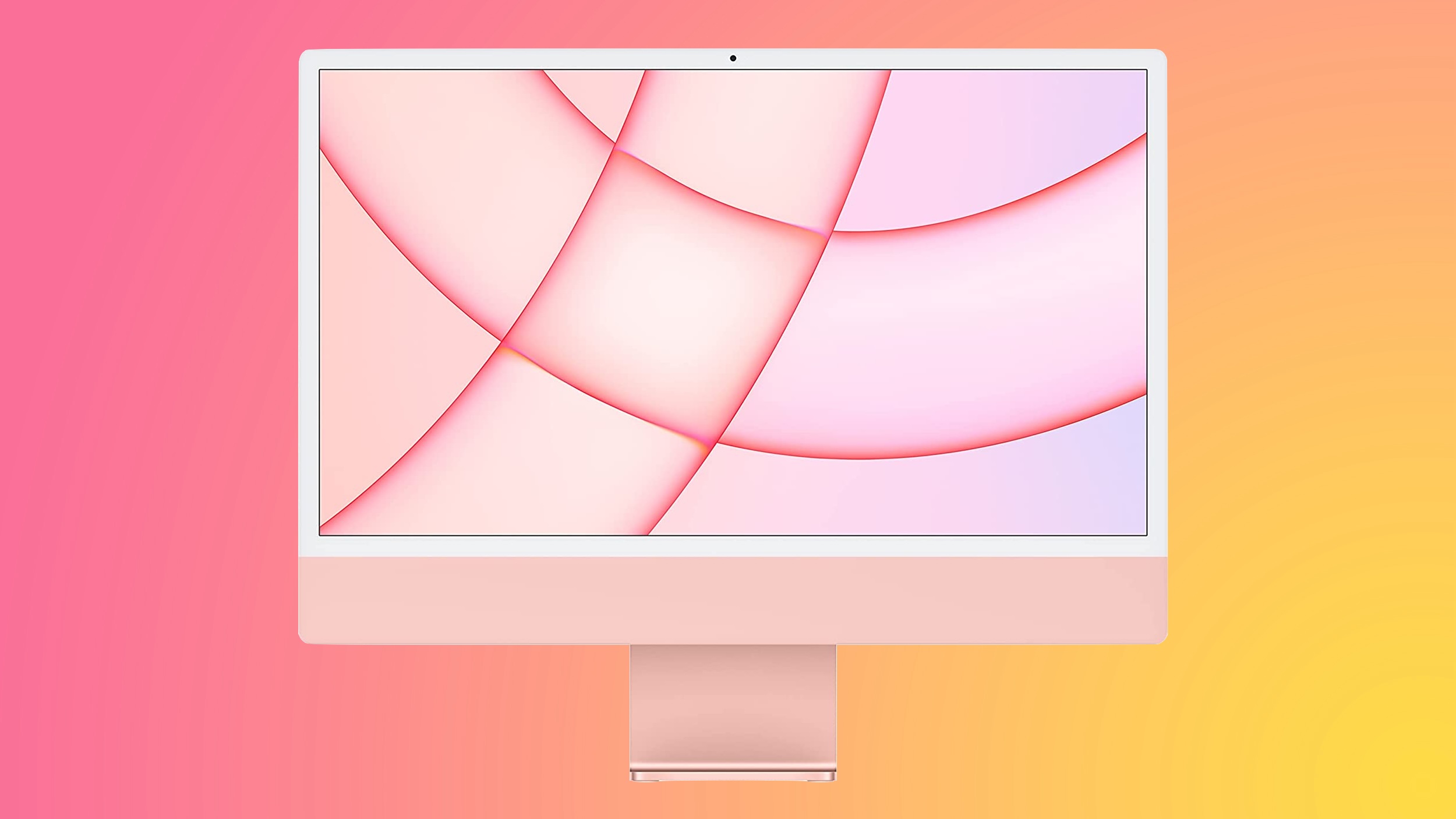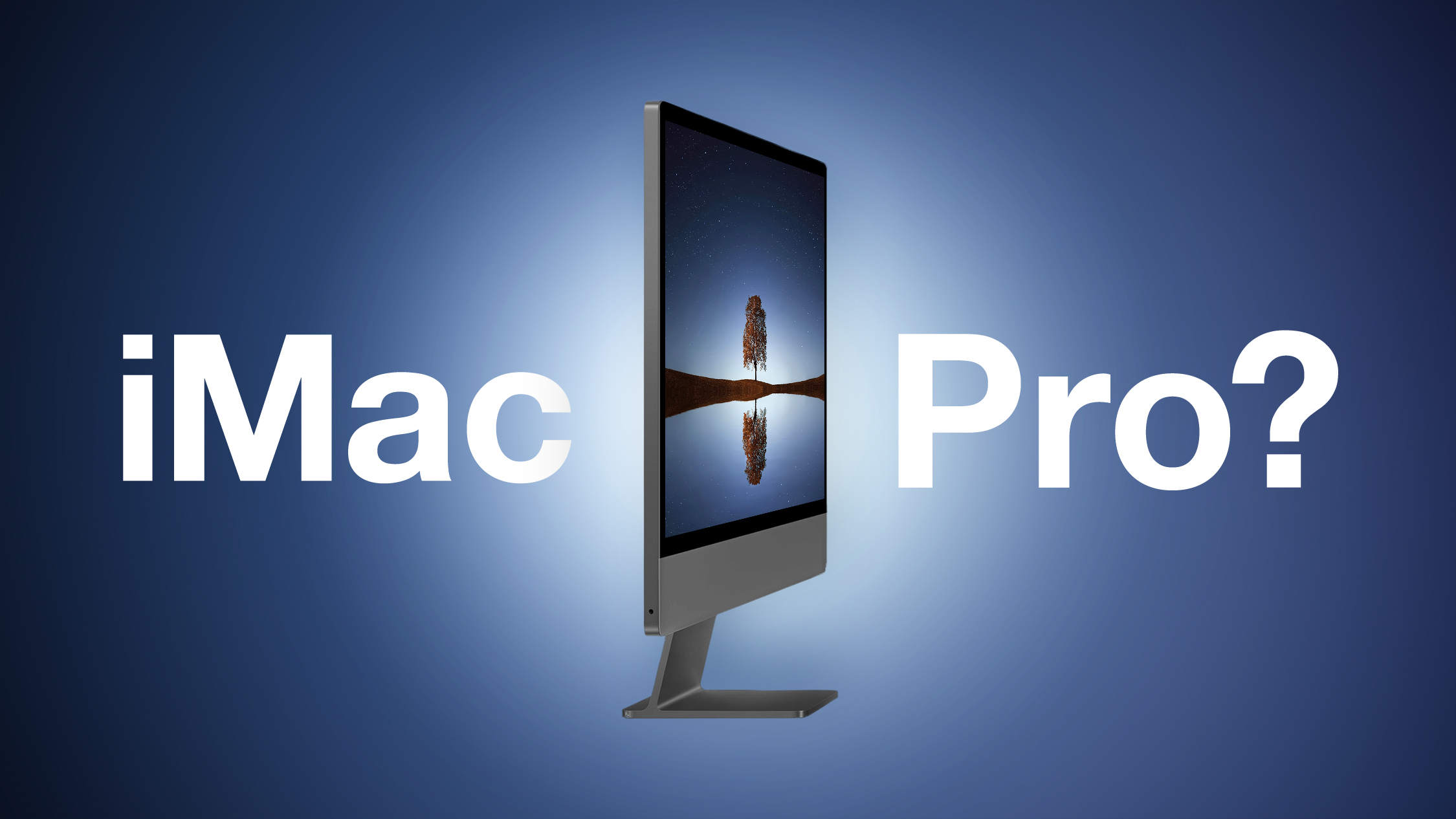im not upgrading my 27" intel until we get oled.
I see through all these sideways and small upgrade tricks by apple.
I see through all these sideways and small upgrade tricks by apple.
Apple is planning to refresh the 24-inch iMac as soon as 2024, so we could see a new model with an M4 chip before the end of the year. Apple is working to overhaul the entire Mac line with AI-focused M4 chips, iMac included.

This guide includes everything we know about Apple's plans for an M4 iMac.
M4 Chip
The next-generation 24-inch iMac is expected to get the M4 chip, which is the same chip that Apple used for the latest iPad Pro models. iMacs right now have the M3 chip, so the M4 will be a direct update.
The M4 is built on the same 3-nanometer technology as the M3, but it is a second-generation chip with some speed and efficiency improvements. In a Geekbench benchmark test, the M4 proved to be up to 25 percent faster than the M3 chip, which is a notable jump in performance.
The M3 had a single-core score of 3,087 and a multi-core score of 11,702, while the M4 had a single-core score of 3,695 and a multi-core score of 14,550.
Apple's M4 chip has a 10-core CPU and a 10-core GPU, featuring six efficiency cores and four performance cores. There is a variant of the M4 with a 9-core CPU that Apple has used in the iPad Pro, but it is unlikely that this chip would be offered in the iMac.
Other Macs will get upgraded M4 Pro, M4 Max, and M4 Ultra chips, but the 24-inch iMac is an entry-level product on par with devices like the MacBook Air, so it will only be offered with the M4 chip.
Design
Apple last redesigned the iMac in 2021, and there are no signs that a new look is on the horizon. It's likely that the 2024 refresh of the iMac will focus on the internals rather than any outward-facing design changes.

The iMac is an all-in-one machine that combines a computer and a display. It measures in at just 11.5mm thick, and has a slim profile that fits easily on a desktop. It comes in a range of bright colors, with a matching chin in a pastel color.
So far, we don't know of any updates coming to the iMac except for the M4 chip.
Larger iMac?
There have been persistent rumors of a larger-screened iMac that has a display that's around 30 inches in size, but that device was still in the early stages of development in mid-2023, and there is no word on when a larger iMac might come out.

There is a possibility that we could see it sometime in 2025, but it won't be coming in 2024. Apple this year will stick to the 24-inch iMac, as it has done since discontinuing the 27-inch model in 2022.
Release Date
Back in April, Bloomberg's Mark Gurman said that the 24-inch iMac would likely see an M4 chip update "around the end of the year." Apple sometimes holds events in October or November when new Macs are expected, so we could see the iMac around that timeframe.
Apple is also expected to update the MacBook Pro models and the Mac mini before the end of the year. The iMac was last updated in October 2023, so an October 2024 launch would come right at the year mark.
Article Link: Apple's M4 iMac: What to Expect
Probably neither. I'm thinking 12 GB.Will this be the generation where Apple’s BASE configuration finally has a minimum of 16GB RAM … or will Apple again hobble an otherwise technically superior chip with inadequate 8GB of RAM, forcing an upgrade for hundreds more? ** Microsoft is bragging that all of their new ARM based surface computers start with a min of 16GB!
Whether it gets M4 or M5 next, I'm predicting/hoping it will get 12 GB RAM base.
Maybe not, the base iPad has 8gb still, though there was that one rumor that it actually had 12gb… I’m not sure I understand the chip binning. How did they know all of the 8gb chips would be binned 9 core, and all of the 16gb chips would have all 10 cores?
Maybe the M4 macs will all have 12 gb to start, and they’re just using the bottom binned 9c-8gb ones for the iPad since iPadOS is lighter?
1 is now both even and odd; just like my car was both fine according to the Hyundai that hit it and damaged according to the good samaritan that took down the plate. Schrödinger's number.
That's not so bad as it sounds in today's money.So base 27" iMac would be $2,750, and a max spec 32" iMac Pro would be $17,000; if Apple were feeling generous we might see those at $2,500 and $15,000...
And with the AIO form factor, when you want to upgrade, you would also need to pony up for another included display...
Sorry folks, I fear the days of lower cost 27" iMacs are a thing of the past, and any 32" iMac would be quite expensive...
Black with black bezel?A new range of colors from light gray to a sort of darker gray?
The best part of an "AI-focused" chip would be to have the "AI" disabled
ai hardware only gives energy efficiency (running ai code), but these desktops don't run on battery the only reason not to give ai features is to "force" users to buy new hardware.Yep. "No on-board AI capability? how sad. Upgrade now!"
The good news is that there should be a flood of M1 to M3 Macs available cheap as people dump their instantly obsolete machines for the new AI goodness.
Microsoft is making the same push, even more so since so many are still sticking with Windows 10.
I have three just taking up space plus one upstairs (2019) used by the family and the one on my work desk I'm typing this on (2015).
There were technical reasons they stopped supporting Target Disk Mode when the 27" iMacs came out. The standard I/O ports on older large iMacs could not handle the full 5K input. Apple engineered a custom dual display control setup internal to the box but you couldn't push video data fast enough over those older I/O ports.
These days there is plenty of throughput on current generation iMac's usb-c connectors to do it. Also, unlike the older models, all Macs now run off of silent, low power, flash drives so no need to grind the inter hard disk to keep the device running.


So if Apple wanted to, they could design today's 24" iMacs to function in Target Display mode if they choose to put in the work.
They could put a 24"/27"/or larger size panel on today's iMacs and support Target Display mode. It would require work that most users would never care about. They probably won't but it could be done.
As someone who doesn't do video or graphics I'm not sure about the direction Apple silicon is heading. I do music and people who doing non-graphic work the M1 and M2 chips especially the Max versions are great performance for the buck chips. The M3 kept adding more for graphics and now the M4 AI focus. So I'll checkout the M4 numbers, but I'm really happy with my M2 Max.
Someone suggested they’re still using or planning to 2x4gb at some point and dont want inconsistencies
Back in April, Bloomberg's Mark Gurman said that the 24-inch iMac would likely see an M4 chip update "around the end of the year." Apple sometimes holds events in October or November when new Macs are expected, so we could see the iMac around that timeframe.
Isn't Apple forced to refresh the iMac by the end of 2024, to comply with the USB-C switch?
Yes. Its nearly as if Apple deliberately decided that a non standard resolution should be the only fully supported resolution. And the only way to get that larger than 24” should be with a display priced as a 27” iMac without the computer part. Clever.Because Macs look kinda bad on 4k displays, and it becomes more obvious once you've seen one on a 5k display. Guess what? Hardly anyone makes 5k displays except Apple, and the other options are almost as expensive as the Studio Display with lower quality everything. No, if you do graphical work and you want to experience Macs as Apple intended you need a Studio Display or else you're somewhat compromising.
Sure it's not the end of the world if you don't buy the Studio Display but it's almost the same situation with buying an iPad Air vs the Pro, you don't need ProMotion but boy once you have it it's really hard to go back.

